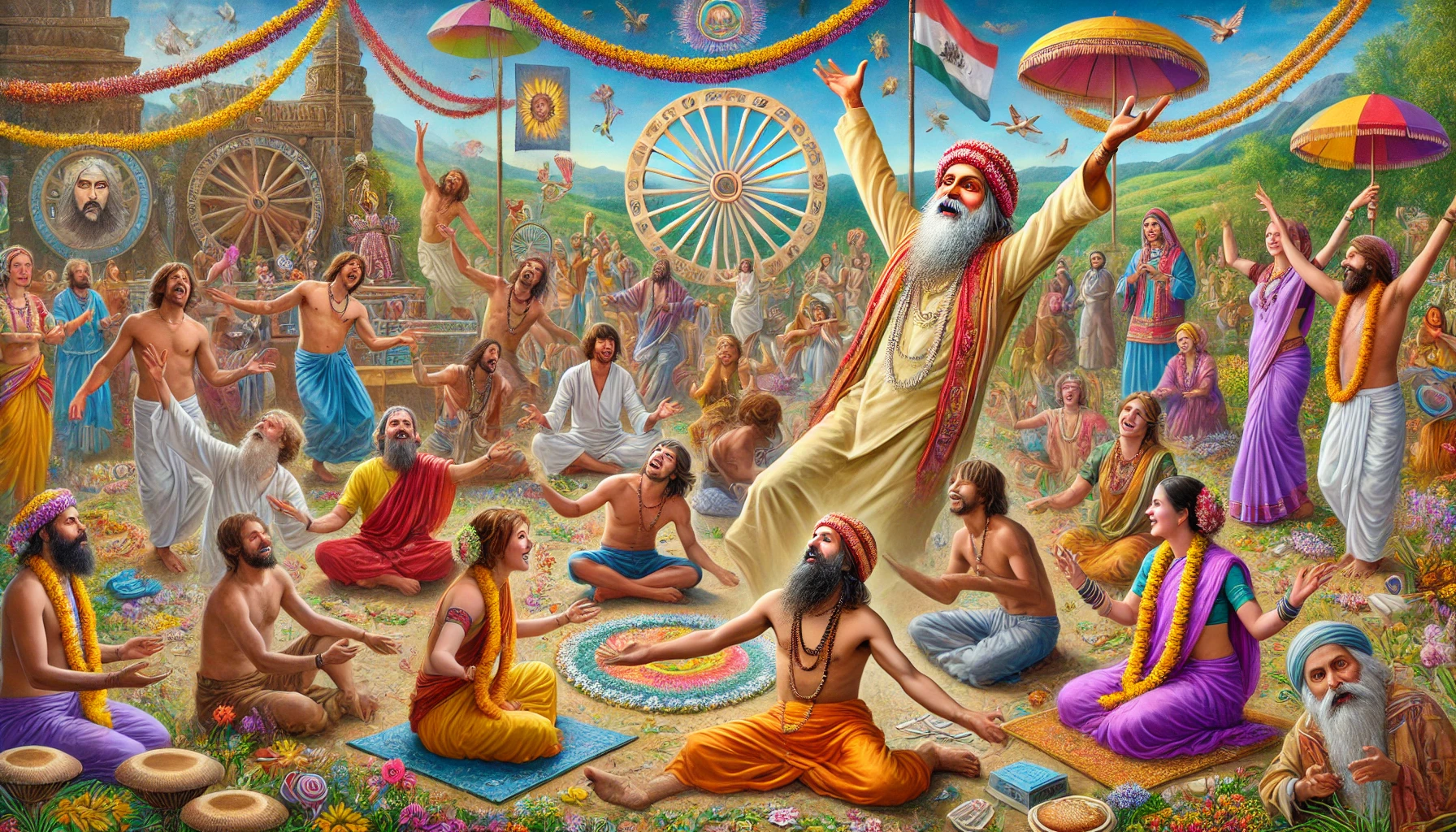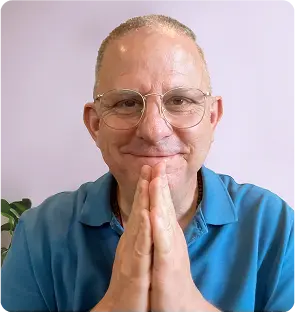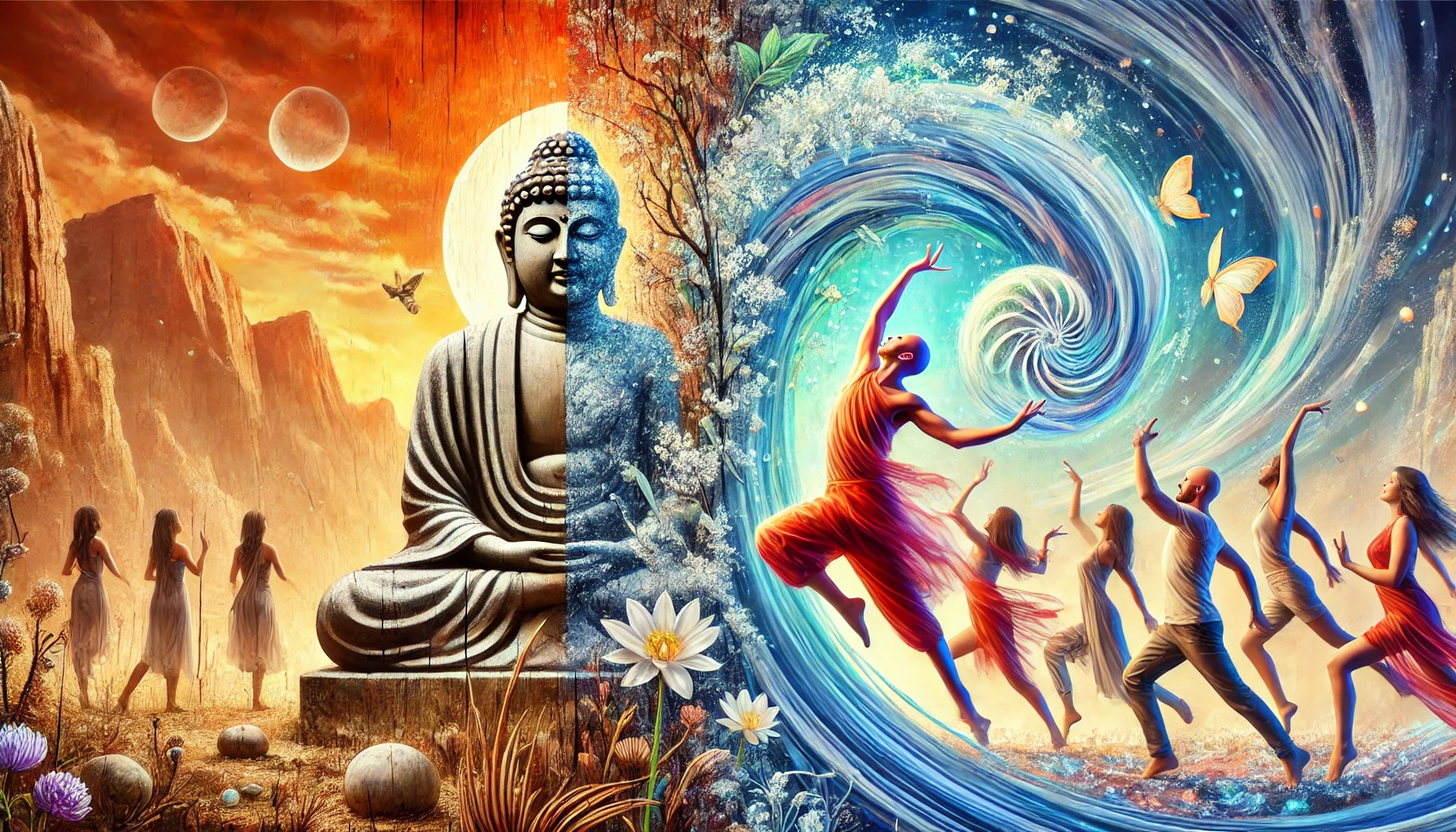
Osho: The Ecstatic Rebel Who Embraced Passion, Desire, and the Divine Dance of Life
Are you ready? The world is starving for raw, unfiltered truth. Right?
CLEARLY – It’s time to inject a dose of Osho’s rebellious spirit into the veins of society, to wake people up from their slumber and ignite a revolution of consciousness.
Are you read to rip the lid off your perceptions, who you are, and what you’re experiencing?
Let’s tear down the walls of conformity, shatter the illusions of normalcy, and unleash the wild, untamed spirit that resides within each and every one of us. Let’s create a world where individuality is celebrated, where passion is ignited, and where authenticity reigns supreme.
Osho’s message is more relevant now than ever before. In a world that’s increasingly homogenized and sanitized, we need his radical wisdom to remind us of our true nature, to awaken us to the infinite possibilities that exist beyond the confines of societal conditioning.
So, let’s raise a toast to the rebels, the misfits, the free spirits, the ones who dare to be different. Let’s embrace our inner badass, unleash our primal power, and create a world that’s vibrant, alive, and pulsating with the raw energy of existence.
Osho, the controversial spiritual teacher, was no stranger to scandal and provocation. He challenged traditional religious dogma and societal norms, encouraging his followers to embrace their passions, explore their desires, and ultimately find liberation through a deep understanding of their own nature.
The Divine Dance of Passion and Desire
Osho believed that passion and desire were not obstacles to spiritual growth, but rather powerful forces that could propel us toward a deeper understanding of ourselves and the universe. He saw them as divine energies that, when fully embraced,
Osho on Passion, Desire, and Liberation: An Intense Journey to True Freedom
Osho, the charismatic and controversial spiritual leader, was a beacon of radical freedom and unorthodox spirituality. His teachings often shook the foundations of traditional dogma, inviting followers to embrace life in all its raw and unfiltered beauty.
At the core of Osho’s philosophy was the unapologetic celebration of passion and desire as pathways to deeper self-understanding and liberation. In a world where spirituality is often equated with renunciation and asceticism, Osho stood out, proclaiming that to live fully and have a fucking great time is the most profound spiritual practice.
Embracing Desire: The Gateway to Liberation
Osho’s perspective on desire was revolutionary. Unlike many spiritual traditions that view desire as something to be suppressed or transcended, Osho saw it as a vital force that could lead to profound self-discovery. He believed that by fully experiencing and embracing our desires, we could transcend them and reach a state of true liberation.
“Desire is not the enemy,” Osho would say. “Desire is the fire that can burn away the layers of conditioning and societal expectations. It is through diving deep into our desires that we can discover who we truly are.”
For Osho, spirituality was not about denying the world but about engaging with it fully. If you felt a genuine urge to participate in a traditional ritual (puja), but your heart and body craved a more intimate, sensual experience, Osho’s advice would be clear: honor your true desire.
“Forget the dogma,” Osho might say. “If you want to suck a penis, suck a penis. It’s much more honest and worthwhile than performing a ritual half-heartedly.”
Living Fully: The Path to Self-Realization
Osho’s teachings encouraged people to live life with intensity and totality. He believed that every moment should be lived with full awareness and passion. This approach to life was not about indulgence for its own sake but about being true to oneself and experiencing life as a means of spiritual growth.
“Life is a celebration,” Osho proclaimed. “To be fully alive is to be fully aware. When you engage with life passionately, you learn to transcend your limitations and connect with the deeper essence of your being.”
Osho’s dynamic meditations and active practices were designed to help individuals break free from societal conditioning and rediscover their natural state of being. By encouraging people to dance, laugh, cry, and express their true selves without inhibition, Osho aimed to strip away the layers of repression and guilt that society imposes.
The Radical Rejection of Dogma
One of Osho’s most distinctive messages was his rejection of traditional religious dogma. He saw dogma as a form of mental slavery that prevented individuals from experiencing the true nature of existence. In his view, rigid adherence to rules and rituals stifled the human spirit and obstructed the path to enlightenment.
“Dogma is the death of spirituality,” Osho asserted. “True spirituality is about freedom, not confinement. It is about finding your own path, not following someone else’s.”
Osho’s teachings often included provocative and shocking statements that challenged conventional morality. By doing so, he sought to provoke a deeper questioning and understanding of what it means to be spiritual. He believed that only by breaking free from the chains of dogma could one experience true liberation.
Passion as a Spiritual Path
Osho’s embrace of passion and desire was not a call for hedonism but a call for authenticity. He believed that living authentically, without guilt or fear, was the highest form of spirituality. This authenticity involves acknowledging and embracing all aspects of oneself, including one’s desires and passions.
“To deny passion is to deny life itself,” Osho taught. “Passion is the energy of life. When you live passionately, you live in alignment with your true self, and this alignment is the key to liberation.”
In Osho’s view, true liberation comes not from escaping the world but from immersing oneself in it fully, experiencing it deeply, and transcending it through awareness. By living passionately and embracing all that life has to offer, individuals can move beyond superficial existence and connect with the profound, eternal essence of their being.
Conclusion: #FuckDogma
Osho’s message is a powerful reminder that spirituality is not about renunciation but about living fully and honestly. It is about embracing our desires, breaking free from dogma, and experiencing life with passion and intensity. His teachings challenge us to rethink our conventional notions of spirituality and to find liberation through authentic living.
So, if you feel a pull towards a traditional ritual but are burning with a deeper, more personal desire, Osho’s advice would be clear: follow your heart, live your truth, and in doing so, discover the true nature of your existence. #FuckDogma
In embracing this radical honesty and passion, we open the door to a deeper, more liberated understanding of ourselves and the world around us.
This is why I created The Shankara Oracle – it’ll get you started until we meet.
Get The Shankara Oracle and dramatically improve your perspective, relationships, authentic Self, and life.











